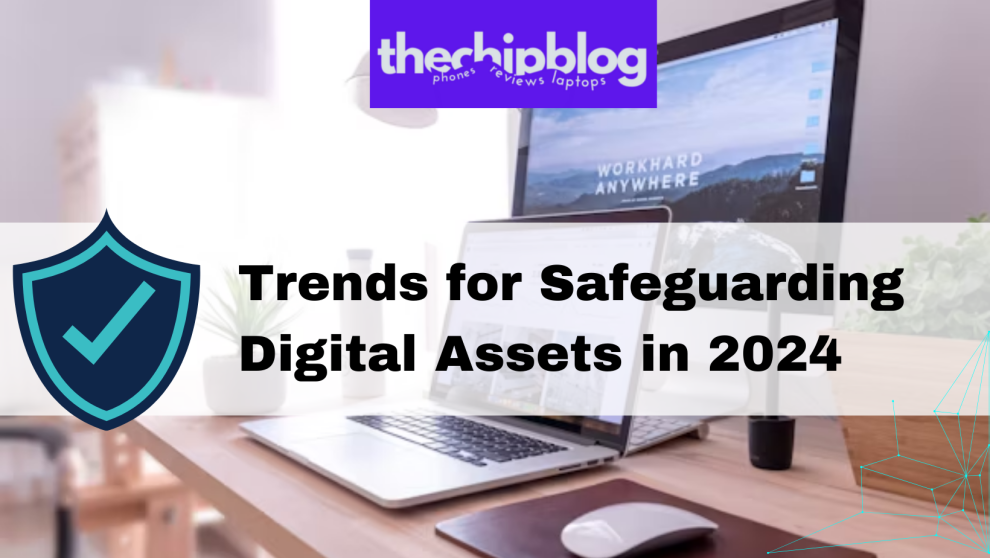Brace yourselves, as the digital landscape of 2024 promises to be a battlefield like no other. Cybercriminals are sharpening their weapons, and the stakes have never been higher. In this high-stakes game, only the most vigilant and proactive organizations will emerge victorious, safeguarding their digital assets from the ever-evolving threats that lurk in the shadows. Buckle up, because this article will unveil the critical cybersecurity trends for 2024, equipping you with the knowledge and strategies to fortify your defenses and emerge unscathed.
What are the most significant cybersecurity threats looming in 2024?

As technology advances at breakneck speeds, so do the tactics employed by cybercriminals. In 2024, the cybersecurity landscape will be dominated by a multitude of threats, each more sophisticated and insidious than the last. Ransomware attacks, which hold data hostage for hefty ransoms, are expected to escalate in frequency and complexity. Advanced Persistent Threats (APTs), stealthy and relentless, will continue to target high-value assets, making it imperative for organizations to adopt robust detection and prevention measures.
Moreover, the rise of Deepfakes and AI-powered social engineering attacks will pose unprecedented challenges, exploiting human vulnerabilities with uncanny precision. As the Internet of Things (IoT) continues to proliferate, the attack surface expands exponentially, leaving organizations grappling with the daunting task of securing an ever-growing network of connected devices.
How can organizations strengthen their cybersecurity posture in 2024?

In the face of these formidable threats, organizations must adopt a proactive and multi-layered approach to cybersecurity. The implementation of Zero Trust Architecture, which assumes that every user, device, and connection is inherently untrusted, will become a critical line of defense. This framework demands continuous verification and validation, ensuring that only legitimate entities gain access to sensitive resources.
Furthermore, the adoption of Artificial Intelligence (AI) and Machine Learning (ML) will play a pivotal role in detecting and responding to cyber threats in real-time. By harnessing the power of these technologies, organizations can stay one step ahead of adversaries, identifying anomalies and potential breaches before they escalate into catastrophic events.
What role will employee awareness and training play in safeguarding digital assets in 2024?

While technological solutions are indispensable, cybersecurity in 2024 will heavily rely on empowering and educating employees. Social engineering attacks, which exploit human vulnerabilities, will continue to pose significant risks. Organizations must invest in comprehensive cybersecurity awareness programs, equipping employees with the knowledge and skills to identify and mitigate threats.
Regular training sessions, simulated phishing exercises, and reinforcement of best practices will be crucial in fostering a culture of cybersecurity vigilance. By empowering employees as the first line of defense, organizations can significantly reduce the risk of successful attacks and data breaches.
How will regulatory compliance impact cybersecurity strategies in 2024?

As cybersecurity threats continue to escalate, regulatory bodies are tightening their grip on data protection and privacy laws. In 2024, organizations will need to prioritize compliance with stringent regulations, such as the General Data Protection Regulation (GDPR) and the California Consumer Privacy Act (CCPA). Failure to adhere to these regulations can result in severe financial penalties and reputational damage.
Organizations must implement robust data governance frameworks, ensuring that sensitive information is handled, stored, and processed in accordance with regulatory requirements. Regular audits, risk assessments, and compliance monitoring will be essential to maintain a strong cybersecurity posture and avoid costly fines or legal repercussions.
What role will cybersecurity insurance play in risk mitigation strategies?

As the cyberthreat landscape becomes increasingly complex, organizations are turning to cybersecurity insurance as an additional layer of protection. In 2024, the demand for comprehensive cybersecurity insurance policies is expected to surge, providing financial safeguards against the potentially devastating consequences of successful cyber attacks.
However, obtaining adequate coverage will require organizations to demonstrate robust cybersecurity practices and adherence to industry standards. Insurance providers will scrutinize an organization’s security posture, assessing their ability to mitigate risks and respond effectively to incidents. By investing in cybersecurity insurance, organizations can transfer a portion of the financial risk associated with cyber attacks, enabling them to focus on proactive defense measures.
How can organizations foster collaboration and information sharing to enhance cybersecurity?
In the battle against cybercrime, strength lies in unity. In 2024, organizations will need to embrace collaboration and information sharing as a cornerstone of their cybersecurity strategies. By participating in industry-wide threat intelligence networks, organizations can gain invaluable insights into emerging threats, attack vectors, and effective countermeasures.
Fostering partnerships with cybersecurity firms, law enforcement agencies, and government entities will also be crucial in staying ahead of adversaries. Through these collaborations, organizations can access cutting-edge research, best practices, and real-time threat intelligence, enabling them to respond swiftly and effectively to emerging cybersecurity challenges.
What role will cloud security play in safeguarding digital assets in 2024?

As cloud adoption continues to accelerate, the need for robust cloud security measures will become paramount in 2024. Organizations must prioritize the implementation of robust access controls, data encryption, and continuous monitoring to ensure the security of their cloud-based assets.
Cloud Security Posture Management (CSPM) solutions will gain traction, enabling organizations to assess and remediate misconfigurations and vulnerabilities across their cloud environments. Additionally, the adoption of secure DevOps practices, such as shift-left security and continuous integration/continuous delivery (CI/CD) pipelines, will be essential to maintaining a secure cloud infrastructure throughout the development and deployment lifecycles.
How can organizations balance cybersecurity with operational efficiency?

While cybersecurity is a top priority, organizations must strike a delicate balance between robust security measures and operational efficiency. In 2024, the implementation of automation and orchestration tools will play a pivotal role in streamlining security processes, reducing manual effort, and minimizing the risk of human error.
Security Orchestration, Automation, and Response (SOAR) platforms will enable organizations to automate incident response procedures, ensuring swift and consistent action against potential threats. By integrating security tools and workflows, organizations can enhance their overall security posture while minimizing disruptions to business operations.
What emerging technologies will shape the cybersecurity landscape in 2024?

As we approach 2024, the cybersecurity landscape will be shaped by a host of emerging technologies, each with the potential to revolutionize the way we approach digital security. Quantum computing, once a theoretical concept, will become a reality, posing significant challenges to traditional encryption methods. Organizations will need to prepare for the advent of quantum-resistant cryptography to safeguard their sensitive data.
Additionally, the rise of 5G networks and the Internet of Things (IoT) will exponentially increase the attack surface, necessitating robust security measures to protect these interconnected ecosystems. Edge computing, which brings processing power closer to the data source, will also gain traction, introducing new security considerations and requiring innovative solutions.
By staying ahead of these emerging technologies and adapting their cybersecurity strategies accordingly, organizations can position themselves at the forefront of digital security, safeguarding their assets and maintaining a competitive edge in an increasingly digital world.
Conclusion:
In the digital battleground of 2024, the stakes have never been higher. Cybercriminals are relentless, and their tactics are constantly evolving. However, by embracing the cybersecurity trends outlined in this article, organizations can fortify their defenses and emerge victorious in the fight to safeguard their digital assets.
From implementing Zero Trust Architecture and leveraging AI/ML to fostering a culture of cybersecurity awareness and collaboration, the path to success is multifaceted. Regulatory compliance, cybersecurity insurance, and cloud security will play pivotal roles, while emerging technologies like quantum computing and 5G will reshape the landscape.
Ultimately, the key to safeguarding digital assets in 2024 lies in proactive planning, continuous vigilance, and a unwavering commitment to staying ahead of the curve. By embracing these cybersecurity trends, organizations can navigate the treacherous waters of the digital world, protecting their critical assets and ensuring business continuity in an ever-evolving threat landscape.
















Add Comment